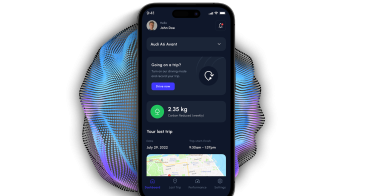Latvia-Liepāja: Low Emissions Zones CO2 monitoring
Background
Challenge
How can the CO2 levels of vehicles entering and leaving a specific urban area be monitored by using licence plates for identification and integrating them with a digital twin?
Context
In Liepaja, Latvia – one of the EU 100 climate-neutral and smart cities – the primary challenge is addressing CO2 emissions stemming from private transport, which contributes to a significant 46% of the city’s overall emissions. The existing data gathering system, especially for transport emissions, is not as efficient as needed. This inefficiency hinders the city’s ability to precisely monitor and manage emissions from individual vehicles. This inadequacy poses a challenge to the city’s capability to accurately monitor and control emissions originating from individual vehicles. Presently, information on transport emissions is gathered through a cumbersome process involving fuel stations. The municipality writes official letters to these stations, waits for the response regarding fuel consumption data, and subsequently provides the obtained information to experts who convert energy data into emissions. Finally, these data are combined to generate graphics for a comprehensive overview. This intricate and time-consuming procedure underscores the pressing need for a more streamlined and efficient data collection mechanism.
Despite having a traffic monitoring system in place with features such as facilitating “green waves,” monitoring intersection occupancy, detecting the presence of vehicles, remote control of traffic lights, vehicle counting, pedestrian detection through thermo detectors, red light violation detection, transport classification, and capabilities to receive warnings about errors in traffic lights, there remains a key challenge in integrating these functionalities for effective emission control. The current systems operate independently, and while they offer valuable insights into traffic patterns and violations, a cohesive integration is necessary to leverage this data comprehensively for real-time emission monitoring and control. Applicants are encouraged to propose solutions that bridge the existing gaps and enhance the synergy among these features for a more robust and integrated emission control system.
Considering these factors, the goal is to enhance the current traffic control and monitoring infrastructure to specifically target and address CO2 emissions from road transport. Despite the current absence of extensive cameras and sensors in the city’s infrastructure, there is an opportunity to develop a more efficient and comprehensive data gathering system by strategically integrating new surveillance technologies.
The expected outcome
The proposed solution should involve the integration of advanced license plate recognition technology into the traffic control infrastructure. This technology, combined with data analytics capabilities, would enable the identification and tracking of vehicles entering and exiting specific zones and afterwards also the whole city. By focusing on road transport, the city can strategically address the major source of CO2 emissions.
Furthermore, the system could be designed to categorise vehicles based on their emission profiles, providing valuable insights for formulating targeted policies. With the possibility of mandatory low-emission zones in cities post-2030, Liepaja could proactively position itself by implementing a robust monitoring system that aligns with future regulatory requirements.
The development of such a system not only addresses the current inefficiencies in data gathering for transport emissions but also positions Liepaja as a city at the forefront of sustainable urban planning. It sets the groundwork for proactive emission management, aligning with global trends toward environmental awareness and low-emission zones.
Published on 5 March, 2024.





